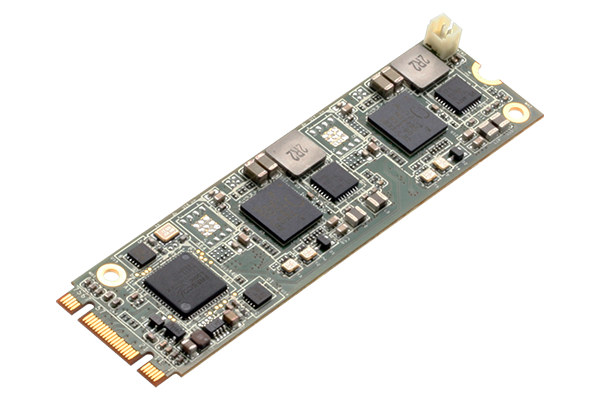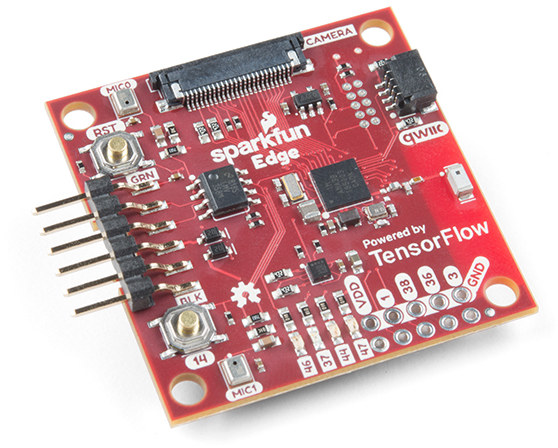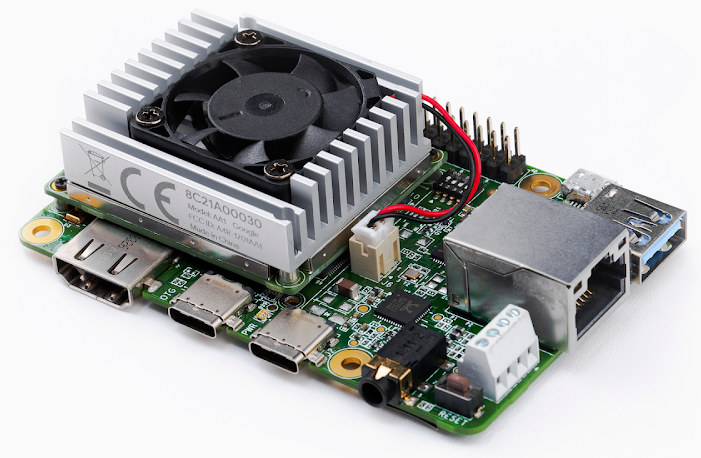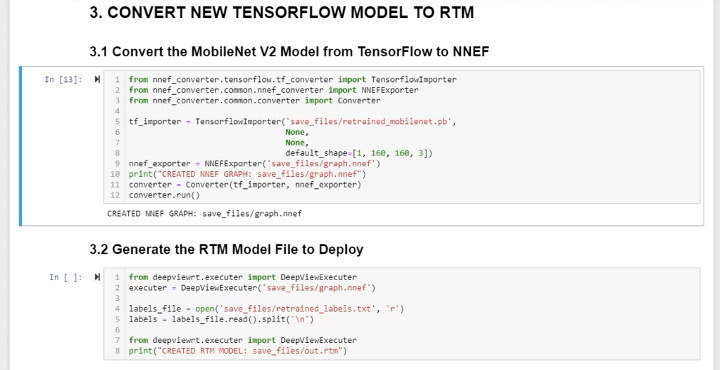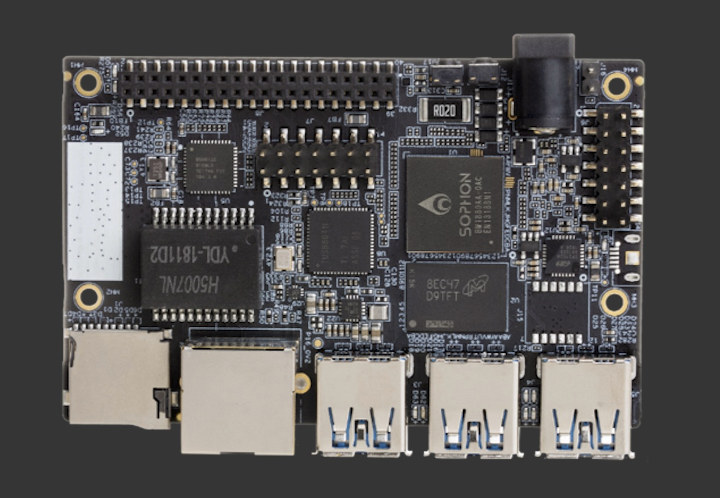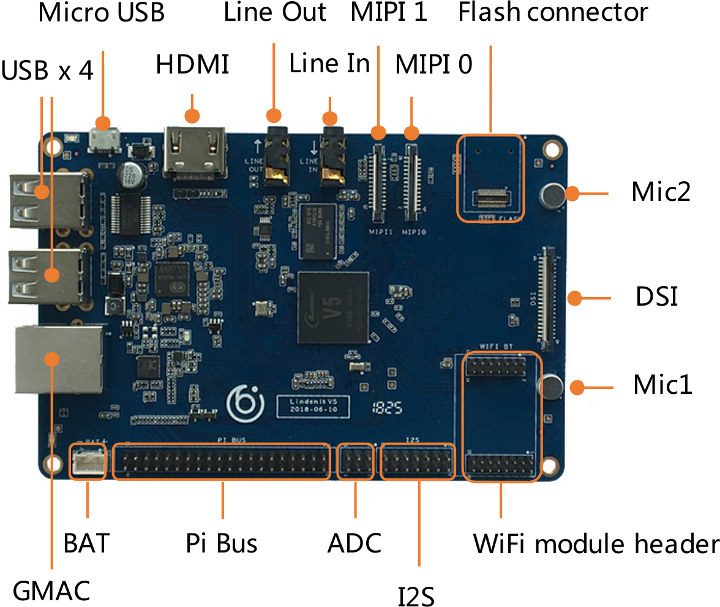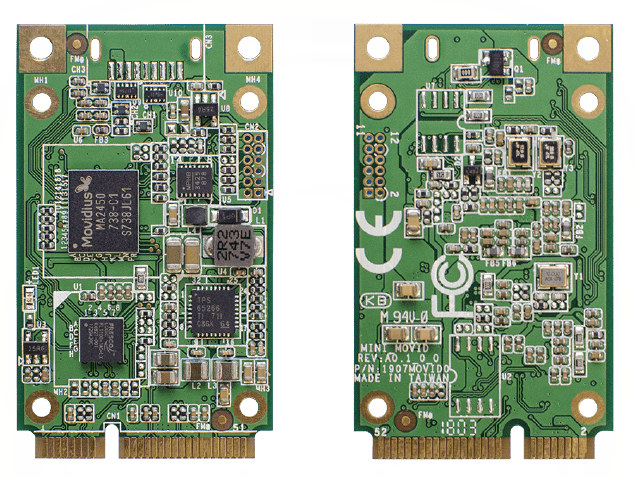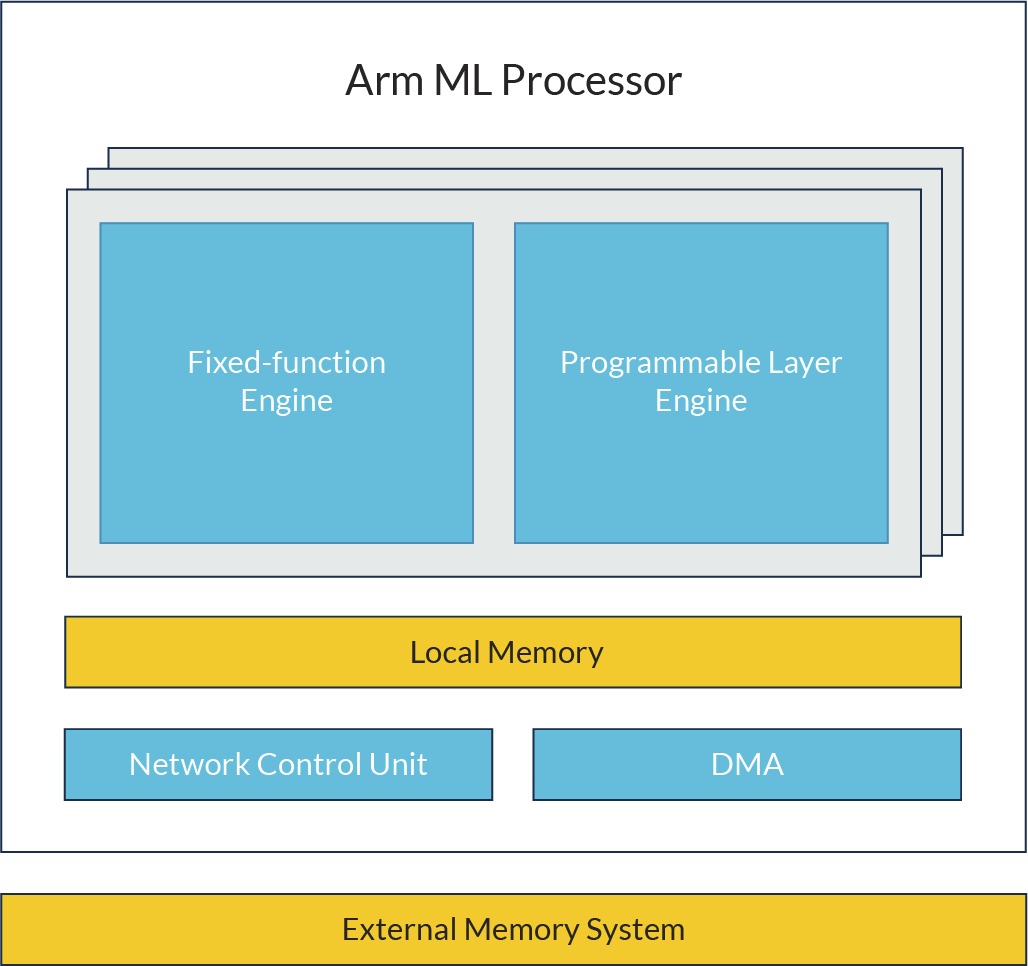AAEON released UP AI Core mPCIe card with a Myriad 2 VPU (Vision Processing Unit) last year. But the company also has an AI Core X family powered by the more powerful Myriad X VPU with the latest member being AI Core XM2280 M.2 card featuring not one, but two Myriad X 2485 VPUs coupled with 1GB LPDDR4 RAM (512MB x2). The card supports Intel OpenVINO toolkit v4 or greater, and is compatible with Tensorflow and Caffe AI frameworks. AI Core XM2280 M.2 specifications: VPU – 2x Intel Movidius Myriad X VPU, MA2485 System Memory – 2x 4Gbit LPDDR4 Host Interface – M.2 connector Dimensions – 80 x 22 mm (M.2 M+B key form factor) Certification – CE/FCC Class A Operating Temperature – 0~50°C Operating Humidity – 10%~80%RH, non-condensing The card works with Intel Vision Accelerator Design SW SDK available for Ubuntu 16.04, and Windows 10. Thanks to the two […]
$15 Sparkfun Edge Board Supports Tensorflow Lite for Microcontrollers
The 2019 TensorFlow Dev Summit is now taking place, and we’ve already covered the launch of Google’s Coral Edge TPU dev board and USB accelerator supporting TensorFlow Lite, but there has been another interesting new development during the event: TensorFlow Lite now also supports microcontrollers (MCU), instead of the more powerful application processors. You can easily get started with Tensorflow Lite for MCU with SparkFun Edge development board powered by Ambiq Micro Apollo3 Blue Bluetooth MCU whose ultra-efficient Arm Cortex-M4F core can run TensorFlow Lite using only 6uA/MHz. SparkFun Edge specifications: MCU – Ambiq Micro Apollo3 Blue 32-bit Arm Cortex-M4F processor at 48MHz / 96MHz (TurboSPOT) with DMA, 1MB flash, 384 KB SRAM, 6uA/MHz power usage, Bluetooth support. Connectivity – Bluetooth LE 5 (on-chip) + Bluetooth antenna Camera – OV7670 camera connector Audio – 2x MEMS microphones with operational amplifier Sensor – STMicro LIS2DH12 3-axis accelerometer Expansion – Qwiic connector, […]
Google to Launch Edge TPU Powered Coral Development Board and USB Accelerator
Several low power neural network accelerators have been launched over the recent years in order to accelerator A.I. workloads such as object recognition, and speech processing. Recent announcements include USB devices such as Intel Neural Compute Stick 2 or Orange Pi AI Stick2801. I completely forgot about it, but Google also announced their own Edge TPU ML accelerator, development kit, and USB accelerator last summer. The good news is that Edge TPU powered Coral USB accelerator and Coral dev board and are going to launch in the next few days for respectively $74.99 and $149.99. Coral Development Board Coral dev board is comprised of a base board and SoM wit the following specifications: Edge TPU Module SoC – NXP i.MX 8M quad core Arm Cortex-A53 processor with Arm Cortex-M4F real-time core, GC7000 Lite 3D GPU ML accelerator – Google Edge TPU coprocessor delivering up to 4 TOPS System Memory – […]
Adding Machine Learning based Image Processing to your Embedded Product
CNXSoft: This is a guest post by Greg Lytle, V.P. Engineering, Au-Zone Technologies. Au-Zone Technologies is part of the Toradex Partner Network. Object detection and classification on a low-power Arm SoC Machine learning techniques have proven to be very effective for a wide range of image processing and classification tasks. While many embedded IoT systems deployed to date have leveraged connected cloud-based resources for machine learning, there is a growing trend to implement this processing at the edge. Selecting the appropriate system components and tools to implement this image processing at the edge lowers the effort, time, and risk of these designs. This is illustrated with an example implementation that detects and classifies different pasta types on a moving conveyor belt. Example Use Case For this example, we will consider the problem of detecting and classifying different objects on a conveyor belt. We have selected commercial pasta as an example […]
96Boards AI Sophon Edge Developer Board Features Bitmain BM1880 ASIC SoC
Bitmain, a company specializing in cryptocurrency, blockchain, and artificial intelligence (AI) application, has just joined Linaro, and announced the first 96Boards AI platform featuring an ASIC: Sophon BM1880 Edge Development Board, often just referred to as “Sophon Edge”. The board conforms to the 96Boards CE specification, and include two Arm Cortex-A53 cores, a Bitmain Sophon Edge TPU delivering 1 TOPS performance on 8-bit integer operations, USB 3.0 and gigabit Ethernet. Sophon Edge specifications: SoC ASIC – Sophon BM1880 dual core Cortex-A53 processor @ 1.5 GHz, single core RISC-V processor @ 1 GHz, 2MB on-chip RAM, and a TPU (Tensor Processing Unit) that can provide 1TOPS for INT8,and up to 2 TOPs by enabling Winograd convolution acceleration System Memory – 1GB LPDDR4 @ 3200Mhz Storage – 8GB eMMC flash + micro SD card slot Video Processing – H.264 decoder, MJPEG encoder/decoder, 1x 1080p @ 60fps or 2x 1080p @ 30fps H.264 decoder, […]
Lindenis V5 Allwinner V5 SBC is Designed for AI Video Processing, 4K Encoding
Allwinner V5 V100 is a new quad core Cortex A7 processor targeting 4K 30 fps (Linux) cameras, and integrating AIE intelligent analytic acceleration engine handling motion detection, perimeter defense video diagnosis, and face detection. Usually, it’s pretty hard to get a development board based on a new processor, but Lindenis V5 single board computer based on the processor is already available in China, and comes with 1 to 2GB RAM, HDMI 1.4 and MIPI DSI video outputs, dual MIPI CSI video inputs, Gigabit Ethernet and more. Lindevis V5 SBC specifications: SoC – Allwinner V5 Quad-core Arm Cortex-A7 processor @ up to 1,512 MHz with NEON, VFPv4 FPU 4K @ 30 fps H.265/H.264 encoder and decoder Dual ISP 13M@30fps + 8M@30fps AIE (AI Engine) Architecture – Built-in with intelligent analytics acceleration engine with support for motion detection, perimeter defense, video diagnosis, face detection, flow statistics. Supports binocular depth map. System Memory […]
$70 UP AI Core mini PCIe Card Features Intel Movidius Myriad 2, Supports Tensorflow and Caffe Frameworks
AAEON’s Up Board has given us some affordable Intel development boards over the years with products such as the Cherry Trail based UP Board, or Apollo Lake powered UP Squared board among others, that are competitively priced against equivalent Arm development boards. The company has now launched a new UP AI Edge family, which will include hardware based on Intel Altera FPGA or Intel Movidius VPU (Vision Processing Unit). Their first product is based on the latter, more exactly Movidius 2 2450 VPU, and instead of being a standalone board, UP AI Core is a mini PCIe card that can fit into any 64-bit Intel board or computer. UP AI Core card specifications: SoC – Intel Movidius Myriad 2 2450 VPU System Memory – 512MB DDR SDRAM Mini PCIe edge connector Dimensions – 51 x 30 mm Host computer/board requirements System Memory – 1GB RAM or more Storage – 4GB […]
Arm’s Project Trillium Combines Machine Learning and Object Detection Processors with Neural Network Software
We’ve already seen Neural Processing Units (NPU) added to Arm processors such as Huawei Kirin 970 or Rockchip RK3399Pro in order to handle the tasks required by machine learning & artificial intelligence in a faster or more power efficient way. Arm has now announced their Project Trillium offering two A.I. processors, with one ML (Machine Learning) processor and one OD (Object Detection) processor, as well as open source Arm NN (Neural Network) software to leverage the ML processor, as well as Arm CPUs and GPUs. Arm ML processor key features and performance: Fixed function engine for the best performance & efficiency for current solutions Programmable layer engine for futureproofing the design Tuned for advance geometry implementations. On-board memory to reduce external memory traffic. Performance / Efficiency – 4.6 TOP/s with an efficiency of 3 TOPs/W for mobile devices and smart IP cameras Scalable design usable for lower requirements IoT (20 […]


